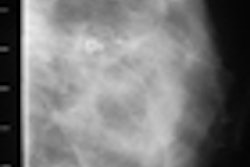If women follow the breast cancer screening guidelines suggested in a study published in the July 5, 2011, issue of Annals of Internal Medicine, it could negate the benefits of mammography in women ages 40 and older and result in thousands of unnecessary breast cancer deaths each year, according a statement released by the American College of Radiology (ACR) and the Society of Breast Imaging (SBI).
The study, conducted by Dr. John Schousboe of the University of Minnesota and colleagues, suggests that it's not cost-effective to annually screen for breast cancer in all age groups of women older than 40. In addition, the results indicate that it's not cost-effective to screen women ages 40 to 49 who are at average risk of breast cancer, according to the authors.
Instead, for every age group, Schousboe's team called for screening at various intervals -- or not at all -- based on individual risk factors such as breast density and family history.
But screening only high-risk women will miss a large percentage of breast cancers present in U.S. women, resulting in unnecessary deaths, and will result in more cancers found at a more advanced stage, requiring far more extensive surgeries and aggressive treatment than would otherwise have been necessary, the ACR and SBI said.
What's more, the study's cost-effectiveness models aren't accurate, according to the two organizations.
"It is the view of the American College of Radiology and Society of Breast Imaging that any attempt to introduce cost-effectiveness based on risk should be done based on solid scientific evidence," the two groups said in the statement. "If inappropriate modeling is used as the basis for such an analysis, and that analysis is ultimately adopted as policy, a great many women may die unnecessarily each year from breast cancer."



















